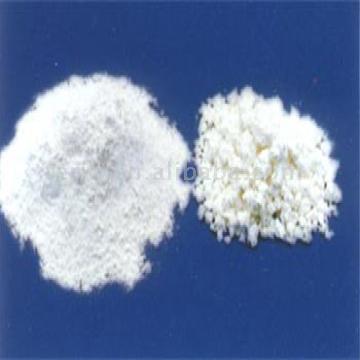
Sodium (Natrium). Part 10A Manual of Materia Medica and PharmacologyThis section is from the book "A Manual of Materia Medica and Pharmacology", by David M. R. Culbreth. Also available from Amazon: Manual of Materia Medica and Pharmacology.Manufacture: 1, By double decomposition between lithium chloride and ammonium carbonate, filtering, washing with alcohol, drying - 2LiCl + NH4HCO3 = Li2CO3 + NH4C1 + HC1; 2, Fuse together lepidolite 10 parts, barium carbonate 10, barium sulphate 5, potassium sulphate 3. The heavy barium silicate and sulphate subside, while lithium and potassium sulphates come to the surface, the mass is now lixiviated to dissolve the two latter salts, and then by double decomposition with ammonium carbonate the lithium carbonate is obtained. It is a light, white powder, odorless, alkaline taste, permanent, soluble in water (78), boiling water (140), diluted acids with effervescence, almost insoluble in alcohol; fuses at low red heat; at higher temperature loses some carbon dioxide, becoming partially lithium oxide; saturated aqueous solution alkaline; contains 98.5 p. c. of the pure salt. Tests: 1. Imparts crimson color to flame. 2. Mix 1 part with distilled water (20), add few drops of hydrochloric acid, with agitation until dissolved, boil, cool, render alkaline with ammonia water - no turbidity or precipitate (abs. of iron, aluminum). 2. Dissolve in 40 parts of diluted acetic acid - .15 p. c. of insoluble residue. Impurities: Heavy metals, iron, aluminum, other alkalies. Should be kept in well-closed containers. Dose, gr. 5-15 (.3-1 Gm.), in carbonic-acid water.
